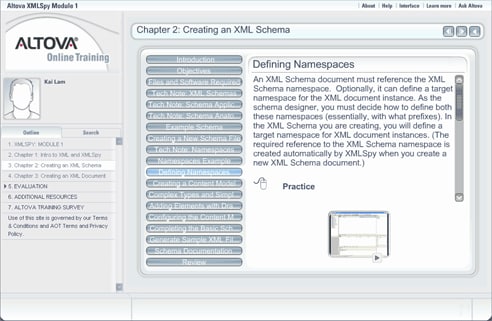Last Sunday’s New York Times had an interesting article on the front page about digital textbooks for the K-12 market. The piece was undoubtedly partially inspired by Governor Arnold Schwarzenegger’s (he’s from California by the way) recently announced initiative that will replace some high school textbooks with digital versions. In fact, compared to standard printed texts, digital textbooks:
- Can be more quickly and readily updated by publishers
- Can often be purchased as individual chapters or a complete text
- Are easier to store and transport, if downloaded to a portable computer
- Can be combined with other digital materials, such as portions of other textbooks, periodical articles, instructor-provided materials, etc.
- Can offer enormous cost-savings of because of elimination of materials, shipping and storage costs that are partially passed on to purchasers
- Provide purchasing and procurement efficiencies
- May feature learning tools content such as hyperlinks to related learning modules, electronic annotation by students, keyword searches, additional graphics and pop-up modules that furnish additional information
And so XML will finally have a chance to truly demonstrate its power in the K-12 market. For my part, I cannot think of a better example of the efficiencies of XML publishing than for education. Certainly most, if not all, of the major educational publishers are already using XML workflows internally because of benefits like validation, single source publishing, amenability to standards and metadata tagging, etc. XML also gives publishers the ability to easily manage multi-dimensional educational content. Educational content, like textbooks and other learning materials, is usually structured around a fairly simple content model using word forms such as titles, paragraphs, quotes, etc. The second dimension of the content is contextual information – footnotes, glossary terms, highlighting items – anything that may be necessary to target a specific audience. For instance, if a piece of content is to be included in a sixth grade textbook it would have different markup than if it were to be used for an eighth grade classroom. The third dimension of K-12 educational content is the standards dimension. Standards are in most cases on the state level and are used to ensure that teachers know exactly what topics they are teaching in a particular piece of the content, ensuring they are covering the complete set of standards for state aptitude tests, like the MCAS. The standards dimension itself has the potential for further layering as content producers adopt their own standards to guide teachers to other relevant standards and topics that the content is aligned to. XML is particularly well-suited to digital publishing of educational content for its ability to easily separate or layer these dimensions and repurpose it in nearly unlimited ways without the need for rekeying information. For example, one company in the article, CK-12 Foundation, develops free “flexbooks” that can be customized to correlate with state standards. Without XML, this would be a nearly (if not completely) impossible undertaking – with XML you can use many of the existing XML content creation tools to streamline the process. So what has taken so long for the K-12 market to embrace XML-enabled digital learning materials? Well, it appears that the issue is an economical one. We still live in a country where many students do not have access to a computer, and few school districts have the means to provide them. Perhaps in the near future there will be a solution for this problem – and perhaps, just perhaps, California has just taken the first steps to lead us in the right direction. So, where does Altova fit into this equation? Well, the Altova MissionKit offers support for intelligent XML content creation and editing for both technical and non-technical users. These tools give educational publishers and other content contributors the ability to work with structured XML content in a comfortable atmosphere, with easy-to-use interfaces, entry-helpers, drag and drop functionality, and a wide variety of options that make working in a team environment a flexible and even seamless process. Visit the Altova website to read more about the MissionKit – or download a free 30-day trial today!
 In this beginner-level module, students start with an overview of XML, including the anatomy of XML documents and schemas. After a brief tour of the XMLSpy user interface, you’ll create an XML Schema and walk through the steps of defining a namespace, creating a content model, adding elements, configuring schema views, and generating sample XML files and schema documentation. Then it’s time to create an XML document based on the schema. By the end of this module, you will be able to enter data in XMLSpy’s grid view and text view, perform well-formedness and validity checks, add new elements, and modify your schema while working on our XML document. Detailed tutorials walk you step-by-step through each task, and you can test what you’ve learned using the interactive quizzes for each chapter. Check out the free XMLSpy training module* now, or visit the Altova Online Training page for a complete list of available training topics, including MapForce, StyleVision, XBRL, and more. All Altova Online Training courses are available on-demand and free-of-charge. *See Altova Online Training System Requirements for supported browsers, etc.
In this beginner-level module, students start with an overview of XML, including the anatomy of XML documents and schemas. After a brief tour of the XMLSpy user interface, you’ll create an XML Schema and walk through the steps of defining a namespace, creating a content model, adding elements, configuring schema views, and generating sample XML files and schema documentation. Then it’s time to create an XML document based on the schema. By the end of this module, you will be able to enter data in XMLSpy’s grid view and text view, perform well-formedness and validity checks, add new elements, and modify your schema while working on our XML document. Detailed tutorials walk you step-by-step through each task, and you can test what you’ve learned using the interactive quizzes for each chapter. Check out the free XMLSpy training module* now, or visit the Altova Online Training page for a complete list of available training topics, including MapForce, StyleVision, XBRL, and more. All Altova Online Training courses are available on-demand and free-of-charge. *See Altova Online Training System Requirements for supported browsers, etc.




